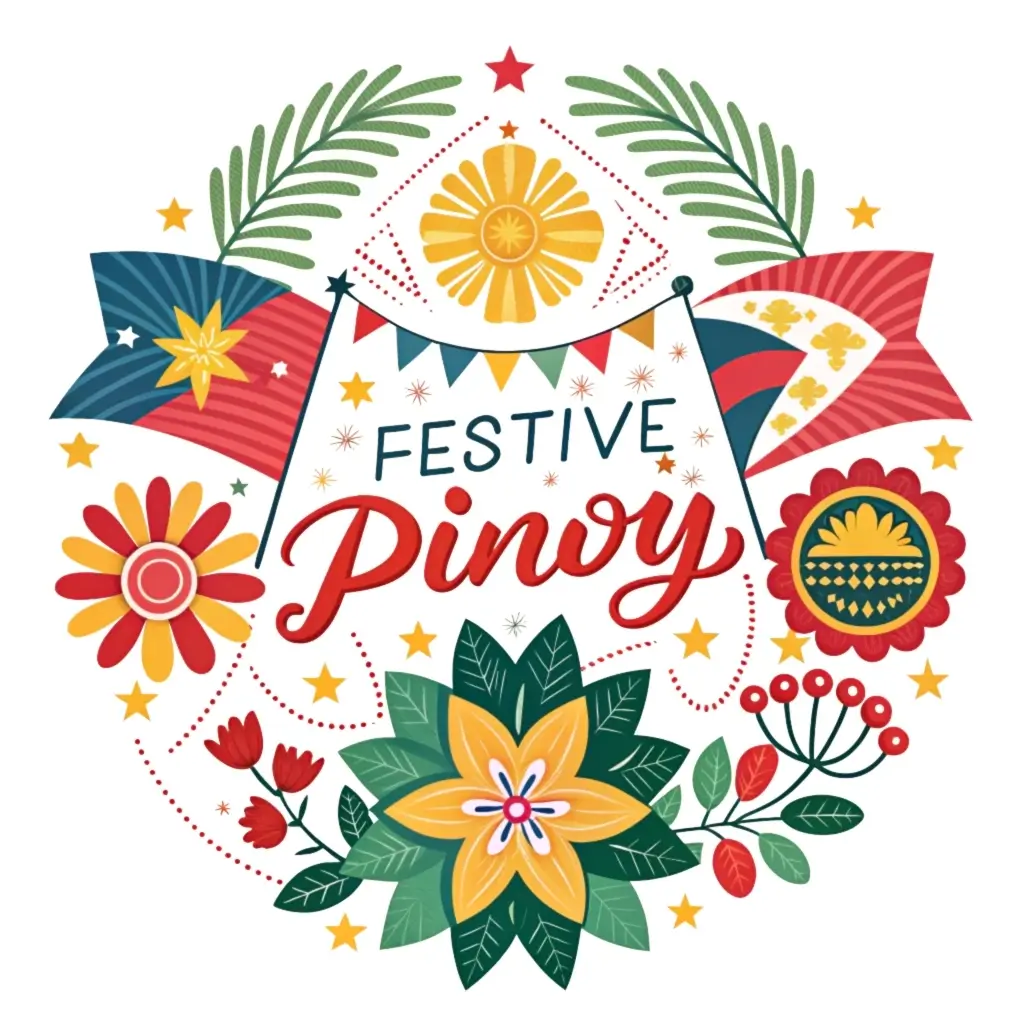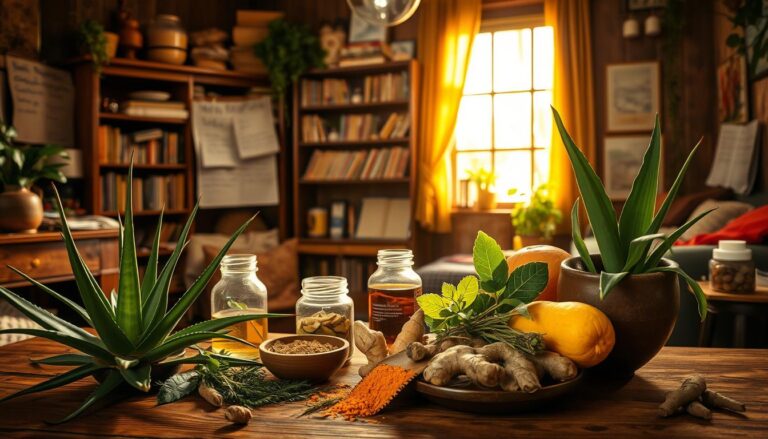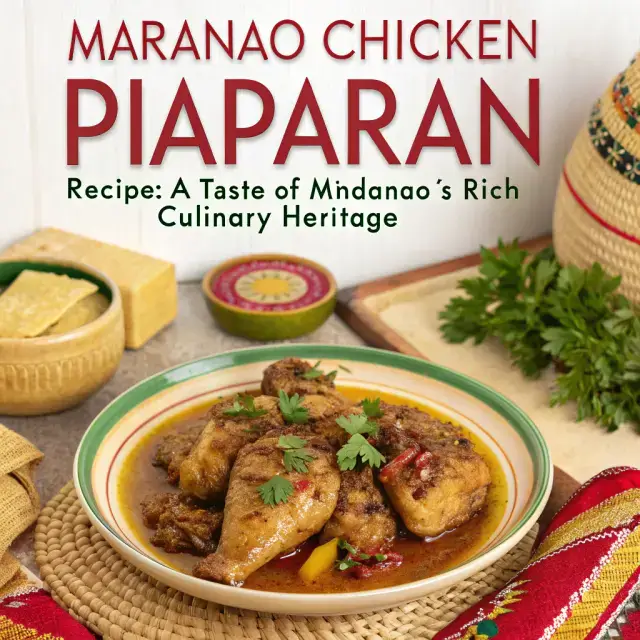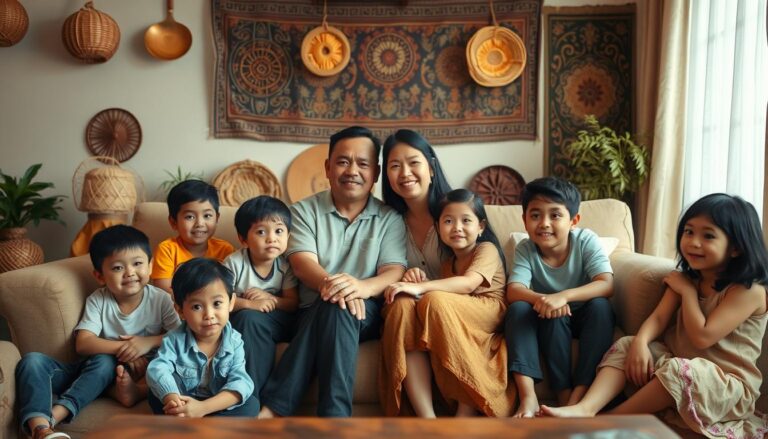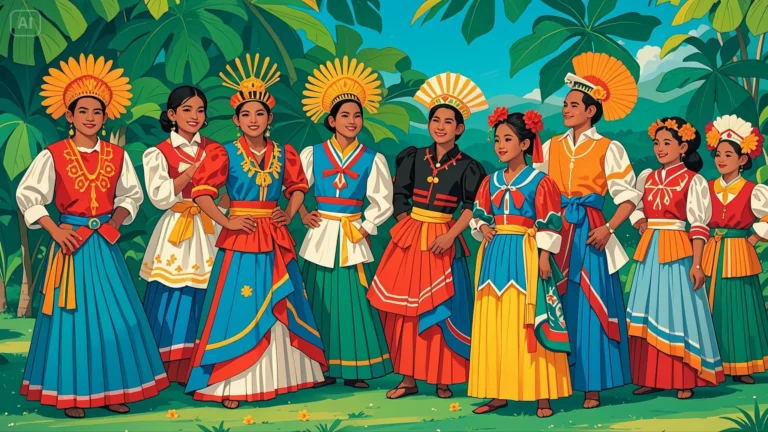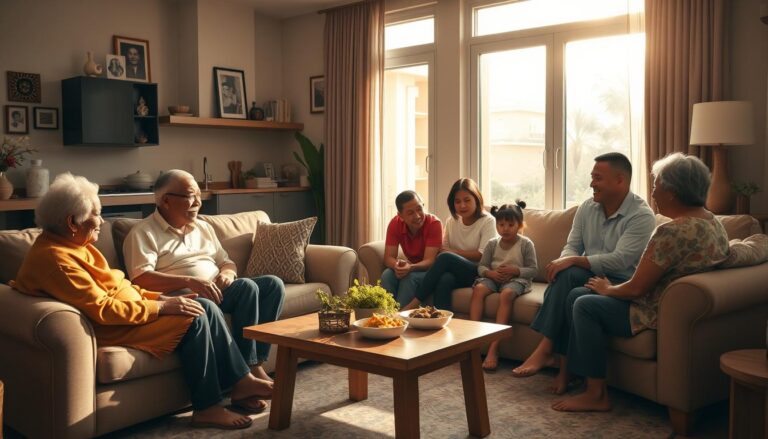Babaylan Healers: Filipino Spiritual Medicine Traditions
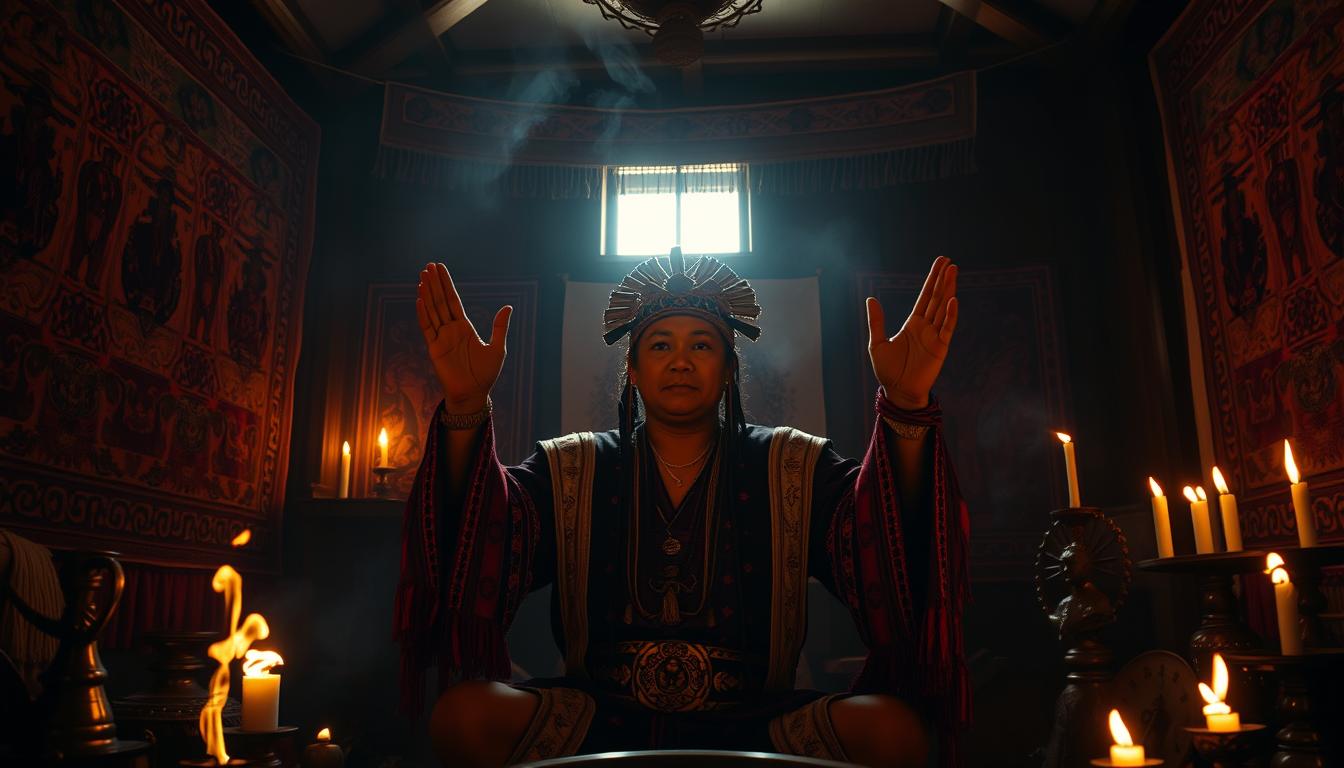
For centuries, communities have relied on ancestral wisdom to foster health and harmony. These practices blend physical care with unseen forces, creating a bridge between daily life and deeper truths. At their core, they emphasize balance—a belief that wellness thrives when body, spirit, and environment align.
Historical records reveal how early practitioners shaped societies through rituals and herbal knowledge. Their methods weren’t just about curing ailments but nurturing collective resilience. Many served as advisors, storytellers, and guardians of cultural memory, ensuring their people’s survival through upheaval.
Over time, external pressures threatened these roles. Yet, their legacy endured, adapting to new challenges while staying rooted in ancient principles. Today, there’s renewed interest in these holistic approaches, especially as modern seekers explore alternatives to mainstream systems.
This article traces their journey—from sacred beginnings to contemporary relevance. We’ll uncover how their wisdom continues to inspire, heal, and unite.
Key Takeaways
- Ancient practices integrated physical and spiritual wellness, prioritizing harmony over isolated treatments.
- Historical practitioners often held multifaceted roles, guiding communities through crises and cultural shifts.
- Colonial influences disrupted these traditions, but grassroots efforts have sparked a modern resurgence.
- Herbal remedies and ritual ceremonies remain central to maintaining holistic health.
- Contemporary adaptations address issues like mental health and environmental stewardship.
Overview of Babaylan Healers: Filipino Spiritual Medicine Traditions
Long before modern systems existed, certain individuals bridged earthly and unseen realms. These mediators balanced community needs with guidance from ancestral forces. Their work blended practical care with ceremonies that connected villages to cosmic rhythms.

Central to their practice was communication with spirits. Through rhythmic chants and symbolic offerings, they sought harmony for both individuals and collective groups. One elder described their purpose: “We don’t just mend bones—we realign energies broken by chaos.”
Women predominantly held these roles, often chosen through dreams or inherited gifts. They guided harvest celebrations, resolved conflicts, and prepared herbal blends. Their authority stemmed from deep knowledge of nature’s cycles and human interconnectedness.
| Role | Function | Tools Used |
|---|---|---|
| Mediator | Bridge physical/spiritual worlds | Incense, chants |
| Community Advisor | Resolve disputes | Divination stones |
| Health Guardian | Herbal treatments | Local plants |
Seasonal rites marked transitions—planting phases, births, or farewells. Each ceremony reinforced bonds among people and their environment. Even today, descendants honor this legacy by adapting core principles to urban challenges.
Historical Context and Impact on Filipino Spiritual Medicine
Rooted in ancient soil, ancestral practices thrived for generations before foreign winds reshaped the islands. These methods blended herbal remedies with sacred rituals, forming a tapestry of care that sustained communities through natural cycles and crises alike.
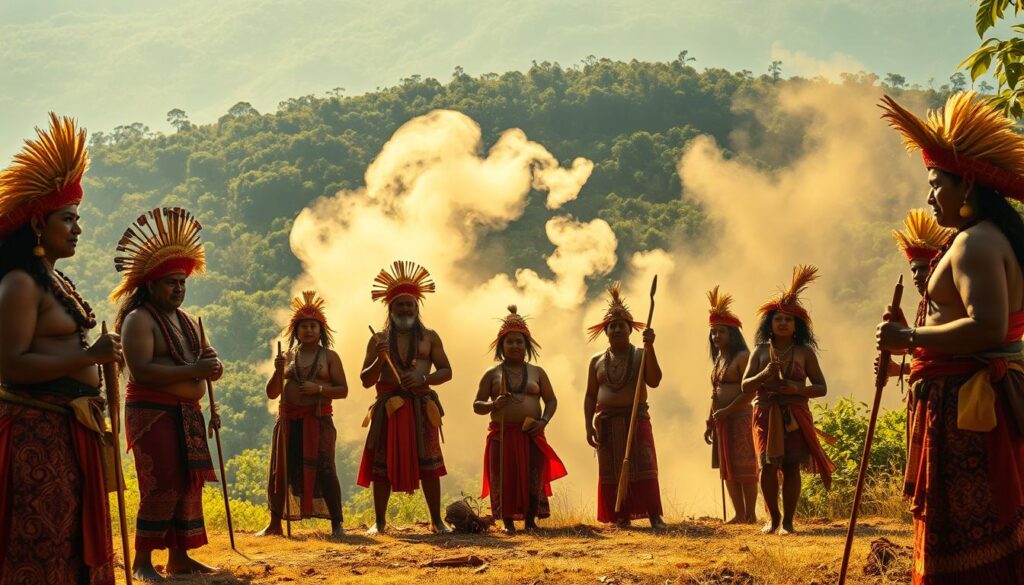
Colonial Disruption and Hidden Survival
When European colonizers arrived in the 16th century, they sought to replace local beliefs with foreign doctrines. Sacred groves were destroyed, and practitioners faced persecution—labeled as threats to new religious orders. One oral account recalls: “They burned our prayer sticks but couldn’t erase the songs in our bones.”
Despite these pressures, ancestral knowledge endured. Herbalists disguised healing rituals as folk customs, while midwives secretly passed down birthing techniques. This covert preservation allowed centuries-old wisdom to survive political and cultural storms.
Rebirth Through Resistance
By the 19th century, renewed interest in cultural identity sparked grassroots efforts to revive traditional systems. Communities in mountainous regions became guardians of nearly lost practices, using oral histories to reconstruct ceremonial formats.
| Period | Key Challenge | Adaptation Strategy |
|---|---|---|
| 16th-17th Century | Religious persecution | Underground networks |
| 18th-19th Century | Cultural erasure | Oral storytelling |
| 20th-21st Century | Modernization | Digital archives |
Today, this reclaimed knowledge fuels holistic health movements. Workshops teach stress-relief techniques inspired by ancestral mindfulness, proving that even suppressed traditions can bloom anew. As one advocate noted: “Our remedies are maps—not just for bodies, but for remembering who we are.”
Cultural Significance and Preservation of Indigenous Heritage
Stories whispered through generations carry more than memories—they hold the keys to survival. Oral traditions act as living threads, weaving together past and present. This body of knowledge shapes identities, grounding communities in shared values while navigating modern complexities.
Language as a Vessel of Wisdom
Specific terms like albularyo (herbalist) and mangtatawas (diagnostician) reveal layers of meaning. These words aren’t just labels—they encode relationships between people, nature, and unseen forces. One elder explains: “Our language maps the way we heal. To lose it is to forget how to breathe.”
Rituals often blend storytelling with action. For example, chanting during harvest ceremonies reinforces gratitude for the land. Such practices teach younger generations about reciprocity, ensuring ecological stewardship remains central to daily life.
Efforts to safeguard these traditions face challenges. Aging practitioners and fading dialects threaten continuity. Yet grassroots projects thrive, recording oral histories and training new custodians. Legal frameworks like Republic Act No. 10066 now recognize their role in national heritage.
| Preservation Method | Impact | Example |
|---|---|---|
| Digital Archives | Protects endangered dialects | Recorded chants of Agusan Manobo |
| Community Workshops | Revives herbal knowledge | Youth-led plant identification |
| Intergenerational Dialogues | Strengthens cultural pride | Elders sharing creation myths |
Through this work, communities reclaim narratives silenced by time. As one advocate notes: “Every story retold is a seed planted—for healing, for belonging.”
Understanding the Roles and Practices of Babaylan
At the heart of ancestral care systems lies a dual responsibility—to mend both visible wounds and invisible fractures. Practitioners balanced this through deep-rooted knowledge, serving as guides who navigated life’s physical and metaphysical challenges.
Healing Methods and Herbal Remedies
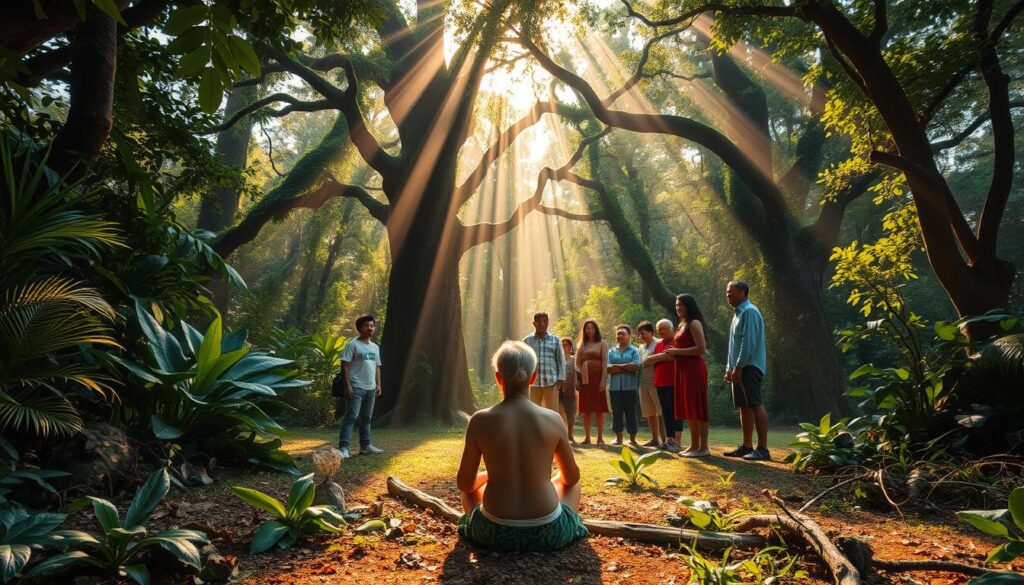
Care strategies blended plant-based solutions with symbolic acts. Mint leaves eased fevers, while turmeric paste treated inflammation. But remedies extended beyond botany—chants and candle rituals addressed energetic imbalances. “Every leaf holds two stories,” one mentor taught. “One for the body, another for the spirit.”
This approach required understanding how environments shape wellness. Coastal groups used seaweed for joint pain, while mountain dwellers brewed pine needle tea. Services operated on trust, with payments often being voluntary offerings.
| Training Phase | Focus | Methods |
|---|---|---|
| Candidate Selection | Identify innate gifts | Dream interpretation |
| Skill Development | Herbal mastery | Plant identification drills |
| Mastery | Ritual leadership | Ceremonial apprenticeships |
Initiation, Apprenticeship, and Training Rituals
Becoming a practitioner wasn’t a choice—it was a calling. Aspirants often showed early signs, like accurately predicting storms or calming distressed others. Training began with months of observing mentors, memorizing plant uses, and learning to interpret omens.
The final test involved solo journeys into forests. Candidates returned with herbs for specific ailments, proving their readiness. This blend of inherited power and earned skill cemented their role as vital community pillars.
Spiritual Beliefs and Rituals Among Babaylan
Rituals often began with rhythmic drumming—a call to unseen forces. These ceremonies drew power from ancestral roots, blending chants with natural elements like smoke or water. Participants believed this created pathways between worlds, allowing guidance to flow freely.
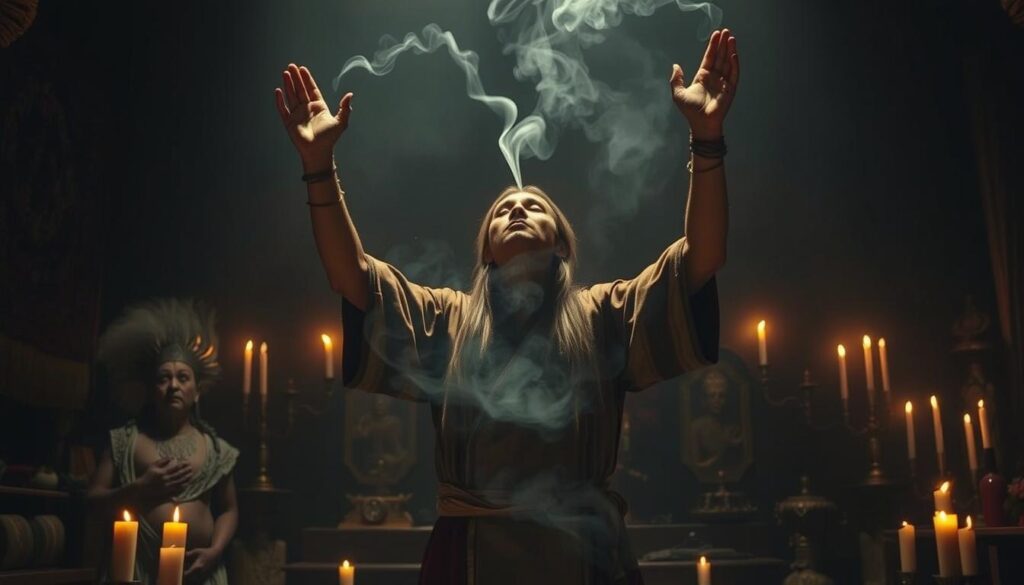
Ceremonial Invocations and Trance States
To enter trance states, practitioners fasted for days or inhaled fragrant resins. One account notes: “The earth speaks through our bodies when we surrender to its rhythm.” These methods helped diagnose illnesses by revealing hidden imbalances in energy fields.
Spanish colonization sought to erase such practices. Yet communities adapted—masking rituals as Christian festivals or household customs. This clever resistance preserved core aspects of their culture despite external pressures.
Modern workshops now teach these ancient healing practices. Urban dwellers learn to interpret dreams using ancestral frameworks. Others use herbal baths paired with mindfulness techniques, proving timeless methods still address today’s stresses.
Key elements of ceremonial practice:
- Moon cycles guiding ritual timing
- Offerings of rice and flowers to honor spirits
- Choreographed dances to channel collective energy
By maintaining these roots, new generations bridge past wisdom with present needs. As one practitioner observes: “Our practice isn’t frozen in time—it’s a river, always moving but never losing its source.”
Gender Dynamics and Inclusivity in Traditional Practices
Leadership in ancient societies often mirrored the rhythms of nature—fluid, adaptive, and rooted in balance. While women frequently guided ceremonies and healing rites, roles extended beyond binary frameworks. This approach created space for diverse voices to shape communal well-being.
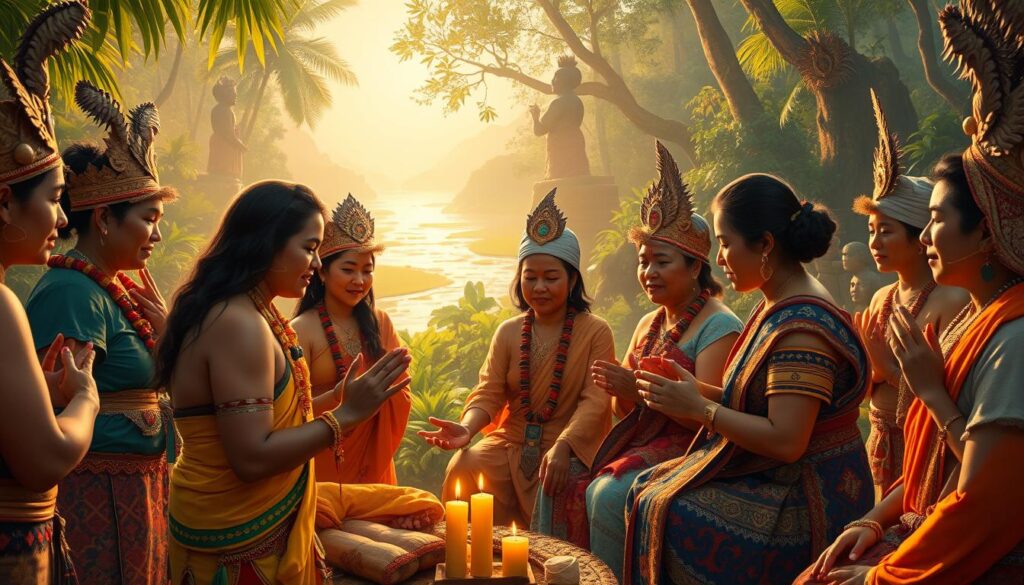
Feminine Leadership and the Role of Asog
Historical records reveal women oversaw major rituals, from harvest blessings to conflict resolution. Their authority stemmed from deep ecological knowledge and intuitive connections to unseen forces. Yet inclusivity thrived through figures like the asog—feminized male shamans who bridged gender divides. One elder’s account notes: “They wore skirts but carried the strength of mountains.”
These individuals weren’t exceptions but vital contributors. The asog performed healing ceremonies, interpreted omens, and counseled leaders. Their presence challenged rigid norms while upholding ancestral traditions. Spanish colonizers documented their influence, often mistaking fluid gender roles for deviance.
| Role | Contribution | Cultural Impact |
|---|---|---|
| Female Leaders | Ritual direction | Preserved herbal knowledge |
| Asog Shamans | Spiritual mediation | Expanded gender expression |
Modern communities draw inspiration from this legacy. LGBTQ+ advocates highlight how these practices validate nonbinary identities today. Workshops now teach stress-relief techniques blending ancient mindfulness with contemporary needs, proving timeless frameworks adapt without losing their core.
Key aspects of traditional inclusivity:
- Leadership based on capability, not gender
- Ritual roles reflecting community diversity
- Herbal knowledge shared across generations
The Revival and Modern-Day Relevance of Babaylan Traditions
Across urban centers and rural villages, a quiet resurgence is breathing new life into ancient wisdom. Modern practitioners blend time-tested methods with innovative approaches, creating pathways for holistic wellness. At the heart of this movement lies a simple truth: healing thrives when rooted in cultural memory yet responsive to current needs.
Integration of Traditional Knowledge in Contemporary Healing
Today’s shamans act as bridges between eras. They guide meditation sessions infused with ancestral chants or combine herbal remedies with mindfulness apps. “We’re not reviving the past—we’re rewiring it for today’s struggles,” notes a practitioner from the Center for Babaylan Studies. Their work addresses modern stressors like digital fatigue through soul-centered frameworks.
Community initiatives amplify these efforts. Urban gardens now grow medicinal plants alongside workshops on energy cleansing. In Santa Fe, New Mexico, healing huts offer trauma support using ritual drumming and group storytelling. These spaces foster belonging while tackling isolation—a pressing issue in fragmented societies.
Key adaptations include:
- Virtual ceremonies connecting global participants
- Herbal clinics partnering with wellness centers
- Youth-led projects documenting oral histories
| Traditional Practice | Modern Application | Impact |
|---|---|---|
| Moon cycle rituals | Guided lunar journaling | Enhances emotional awareness |
| Herbal diagnostics | Holistic nutrition plans | Supports chronic illness management |
By honoring the spirit of collaboration, these efforts prove ancestral wisdom isn’t static. As one advocate summarizes: “Our role isn’t to preserve relics—it’s to kindle fires that light new paths forward.”
Community Engagement, Events, and Healing Workshops
Communities today are weaving ancestral practices into vibrant gatherings that blend learning with lived experience. Public events like the annual Bago City Festival feature time-honored ceremonies such as Pag-anito, where offerings honor natural forces. These spaces allow elders to share oral histories while younger participants practice dances like Tinikling, reinforcing bonds across generations.
Workshops prioritize hands-on learning. At Siquijor’s Folk Healing Festival, mentors demonstrate herbal preparations like tuob steam therapies. One organizer notes: “We don’t just teach recipes—we show how each plant carries stories of resilience.” Sessions often pair ritual demonstrations with discussions on applying these methods to modern stress.
Key features of impactful gatherings:
- Intergenerational mentorship circles
- Guided nature walks identifying medicinal plants
- Collaborative art projects reflecting cultural themes
| Event | Focus | Outcome |
|---|---|---|
| Olang Arts Park | Healer-artist collaborations | Fusion of ritual and creativity |
| Sacred Fridays | Plant harvesting ceremonies | Ecological awareness |
| Youth Mapping Projects | Documenting oral histories | Digital preservation |
Such initiatives transform abstract traditions into shared action. By dancing, planting, or creating together, participants embody their heritage—proving that cultural vitality thrives through collective participation.
Terminology and Linguistic Insights in Babaylan Traditions
Language serves as the heartbeat of cultural memory, encoding centuries of wisdom in its syllables. Specific terms reveal how communities framed wellness—not just as individual care, but as collective harmony. These words act as bridges, linking past knowledge to present understanding.
The Origin and Etymology of Key Terms
Words like catalonan (spirit communicator) trace back to Proto-Austronesian roots, reflecting roles tied to nature’s rhythms. In Luzon, ma-aram (wise one) emerged from terms meaning “knowledge of tides,” showing how environments shaped healing identities. Regional dialects added layers—Visayan groups used balyan for those who interpreted dreams.
| Term | Root Meaning | Cultural Role |
|---|---|---|
| Asog/Bayok | Gender-fluid mediator | Ritual leadership |
| Dungan | Inner strength | Energy alignment |
| Pag-anito | Ancestor veneration | Community rites |
Impact of Colonization on Language and Perception
Spanish chroniclers dismissed native terms as “witchcraft,” eroding their sacred significance. Sacred songs became folk tales, and diagnostic practices were recast as superstition. Yet phrases survived through coded meanings—a hilon (massage) session might secretly address spiritual displacement.
Modern linguists note how colonized groups reclaimed language to strengthen connection. In Mindanao, elders revived nearly lost chants to teach youth about plant-based health care. These efforts highlight language’s power to unite groups across generations.
- Oral histories preserved through rhythmic songs
- Gender-inclusive roles for men and women in rituals
- Dialects as maps of ecological relationships
Conclusion
The resilience of ancient practices lies not in their age, but in their ability to adapt and endure through generations. Ancestral practitioners shaped society as mediators between physical and spiritual realms, guiding communities through crises while nurturing collective well-being.
Colonial disruption caused profound loss, nearly erasing these vital roles. Yet grassroots efforts preserved core methods through oral storytelling and discreet practice. Today, revived rituals honor this legacy while addressing modern challenges like environmental stress and mental health.
These time-tested methods continue influencing holistic care, proving cultural roots strengthen contemporary solutions. From herbal clinics to digital archives, communities reclaim narratives once silenced by loss. “We heal by remembering,” notes a modern mentor, “not just individuals, but the stories that bind us.”
Their enduring impact on society reminds us that true progress embraces ancestral wisdom. By valuing these adaptive methods, we honor bridges between past and future—keeping alive traditions that teach unity amid diversity.
